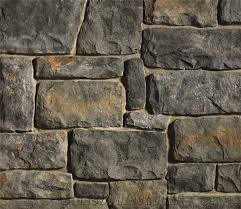The Purpose of this procedure is to ensure that External Stone Cladding work (Marble and Granite) are executed in accordance with the contract requirements, hazards are analyzed, safety procedures implemented all quality assurance/control activities are conducted in a systematic manner, works inspected and conformance is verified and documented for the project.
This method statement to be read in conjunction with the contract specifications, approved drawings, project quality plan and project HSE plan.
All works shall be done with accordance to Approved Method Statement and Project Specifications. Request for inspection shall be submitted for Engineers approval prior to the works commencement
Working Areas will be kept clean by disposing the waste materials at the designated areas. At the end of days’ work, installation supervisor will ensure that the debris are disposed off.
Below is list of necessary tools and equipment for the stone cladding installation works.
- Leveling instruments
- Compressor
- Scrabbler
- Sand Blasting Machines
- Gauge Boxes
- Mixer Machine
- Wheelbarrow for transporting materials
- Hilti Gun with fixing nails
- Notched Trowel
- Flat Trowel
- Tile Cutter
- Wood or Rubber Mallet
- Mechanical Fixing Accessories
Roles and Responsibilities
Project Engineer shall be responsible for the execution of this procedure and to ensure that works are undertaken in a safe manner to the requisite quality and to the time agreed timescale. He shall advise and coordinate with other contractors pertaining to access and interface requirements.
Site Engineer shall be responsible for the site implementation of this procedure including control and the safety of the workers.
Surveyor in coordination with Site Engineer has the responsibility to perform all survey works according to the approved shop drawings.
QA/QC Inspector shall be responsible for the supervision of tests and inspection, control approvals for testing and inspection plan and to arrange documentation required.
Safety Officer shall be responsible for the strict implementation of safety procedure during work commencements. He shall also ensure that adequate access and egress should be provided to the site. Access will be through designated entrance and exit pathways only.
Cladding Installation for Horizontal Surfaces
Cool clean water added to Cement and sand mixture (1:3) and mixed to a uniform lump free consistency.
The use of chilled mixing water will extend open wet time in high ambient temperatures to control setting time.
Full bed mortar method will be used for installing the stone. Setting out is done keeping in mind the required pattern.
Mortar is laid on the substrate horizontally to a thickness of 30-50 mm (as per level) just enough to cover a few pieces of stone.
The mortar is additionally buttered on the backside of stone to ensure full contact.
Stones are then set on the mortar with a twisting action and tapped to ensure correct level and slope.
Pieces of stones are fixed in a temporary way (with mortar) to ascertain required Levels.
Grouting Method
Premixed grout of approved sample will be used.
The grout material has to be laid with the correct consistency and then work the grout into the joint with a flat or squeegee, pulling off the excess grout as much as possible.
When the grout has firmed but is still slightly humid, wipe the tiles clean with a damp sponge.
Do not let the grout residue dry on the surface of the marble or granite.
Inspection and Handover
Floors will be submitted for inspection area by area in the required format and comments if any will be attended.
After the floor, have been installed, must keep all traffic off the floors for at least 48 hours. After the completion of work, the floor shall be protected from staining or damage by covering of polythene sheet / and 3mm ply board panels.
Stone Cladding Installation for Vertical Surfaces / Walls (Mechanical Fixing)
It is ensured that the surfaces to be cladded are sound, dimensionally stable, level, clean and free from laitance, paint, oil, grease and mould release agent and residual curing compound.
All corners are thoroughly checked for right angles.
Holes are drilled in the stone and the wall for the pin and expansion bolt respectively at locations marked as per the panel size.
Alternative slots may be made in the stone while using body anchor fixing of fixtures.
Anchor bolts are fixed to the holes in the wall and tightened.
The stone panel is placed on the fixtures to check alignment. Once the alignment is confirmed, adhesive is smeared in the pin hole/slot and the panel is fixed in place.
Final adjustments are done by tightening the bolts in the expansion shell.
Grouting Method
Joint filler is applied between panels with a rubber spatula.
The grout is compacted into the joints.
Final cleaning is carried out with a wet sponge/cloth after 48 hours of grouting.
Upon completion of a substantial area, inspection is carried out for approval.
The walls will be submitted for inspection area by area in the required format and comments if any will be attended.
Discover more from Method Statement Store
Subscribe to get the latest posts sent to your email.